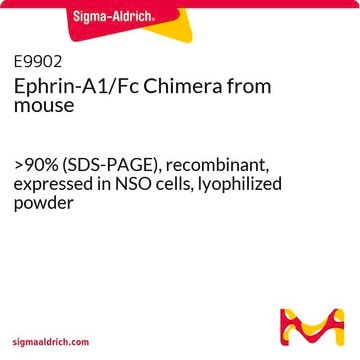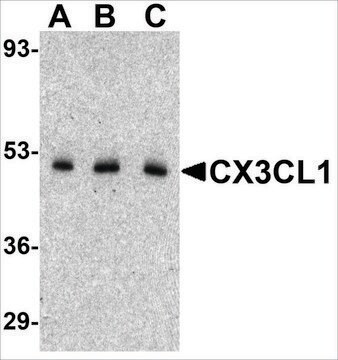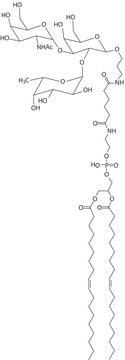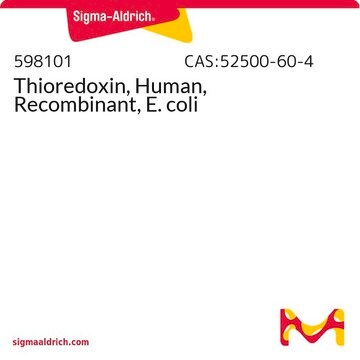Kluczowe dokumenty
F2302
Fractalkine Peptide
>97% (SDS-PAGE), lyophilized powder, mouse recombinant, expressed in E. coli
Synonim(y):
CX3CL-1, Neurotactin
Wybierz wielkość
2990,00 zł
Wybierz wielkość
About This Item
2990,00 zł
Polecane produkty
Nazwa produktu
Fractalkine, Chemokine Domain from mouse, >97% (SDS-PAGE), recombinant, expressed in E. coli, lyophilized powder
pochodzenie biologiczne
mouse
Poziom jakości
rekombinowane
expressed in E. coli
Próba
>97% (SDS-PAGE)
Formularz
lyophilized powder
siła działania
0.3-3 μg/mL
masa cząsteczkowa
calculated mol wt ~9.5 kDa
opakowanie
pkg of 25 μg
warunki przechowywania
avoid repeated freeze/thaw cycles
zanieczyszczenia
endotoxin, tested
numer dostępu UniProt
temp. przechowywania
−20°C
informacje o genach
mouse ... Cx3cl1(20312)
Opis ogólny
Działania biochem./fizjol.
Postać fizyczna
Komentarz do analizy
Hasło ostrzegawcze
Danger
Zwroty wskazujące rodzaj zagrożenia
Zwroty wskazujące środki ostrożności
Klasyfikacja zagrożeń
Eye Dam. 1 - Skin Irrit. 2
Kod klasy składowania
11 - Combustible Solids
Klasa zagrożenia wodnego (WGK)
WGK 3
Temperatura zapłonu (°F)
Not applicable
Temperatura zapłonu (°C)
Not applicable
Wybierz jedną z najnowszych wersji:
Masz już ten produkt?
Dokumenty związane z niedawno zakupionymi produktami zostały zamieszczone w Bibliotece dokumentów.
Active Filters
Nasz zespół naukowców ma doświadczenie we wszystkich obszarach badań, w tym w naukach przyrodniczych, materiałoznawstwie, syntezie chemicznej, chromatografii, analityce i wielu innych dziedzinach.
Skontaktuj się z zespołem ds. pomocy technicznej









